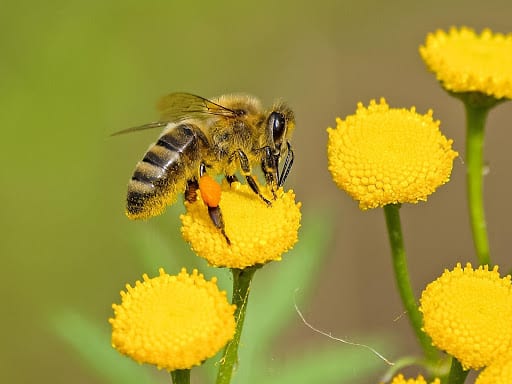An ecosystem thrives when all organisms in the food chain have resources to survive; however, their population needs to remain at a certain level so as not to overwhelm the habitat. Just take the example of the cane toad. They were introduced in Australia to curb the cane-eating insect population; however, their population grew out of control due to a lack of natural predators, making them an invasive species.
Your house is also a small habitat for many insects, each living with purpose and contributing symbiotically to the ecosystem. You may think of them as pests and kill them, thinking they’re venomous or possess some other inherent danger, but that disturbs the ecosystem. Let’s look at some insects we don’t kill as well as the reasons why they should be kept safe.
Bees
Bees are one of the most beneficial insects around. Like some butterfly species, they also have fuzzy hair on their abdomen, which is essential for pollination. Bees jump from flower to flower, collecting precious nectar to make their honey. At the same time, pollen gets stuck to the hair on their bodies. This pollen then gets deposited on the stigma, the female reproductive organ of the flower.
Without bees, plants have to rely on the wind to catch scattered pollen, or they need to depend on asexual reproduction. Pollen from different species introduces genetic variations in a plant, improving their chances of survival and helping them adapt to changing climates.
Spiders
With 45,000 known species of spiders worldwide and 3,000 in North America alone, spiders are among the most diverse organisms (though technically not insects). It is unlikely that you’ll encounter a harmful species in your home, but if you think you’ve found a dangerous species, try coercing them out of your house, entrapping them in a jar, or in the best-case scenario, let pest control handle it if you think the spider poses a danger to your life.
Some spiders like the daddy long legs variety, the American house spider, and the grass spider are common harmless spiders that feed on other insects that get trapped in their web, like mosquitos, aphids, and beetles. They naturally control these pests’ population without you having to use chemical pesticides that may otherwise destroy an ecosystem, or worse, get into the human food chain.
Praying Mantis
The Praying Mantis looks intimidating because of its large size and scary features, but it also makes them good hunters with a big appetite. You probably won’t find them inside your home, but these insects are excellent to have around your garden.
What makes praying mantises unique is the diverse species they can devour throughout their lifecycle. Young praying mantises feed on soft-bodied insects like mosquitos, moths, caterpillars, and aphids. Once mature, they can even prey on small rodents and lizards! But that’s not all. If the prey population dwindles, they resort to cannibalism, thereby controlling their population.
Conclusion
Every organism has a niche in the environment they inhabit. With a rise in urbanization, you’ll likely come across a variety of insects. Most insects are beneficial to the environment, having a specific function that brings about harmony in the ecosystem. Human intervention at extreme levels can disturb this harmony and introduce undesirable consequences. Hence, if you find any insect wandering in your home, try freeing it outside instead of killing it.
